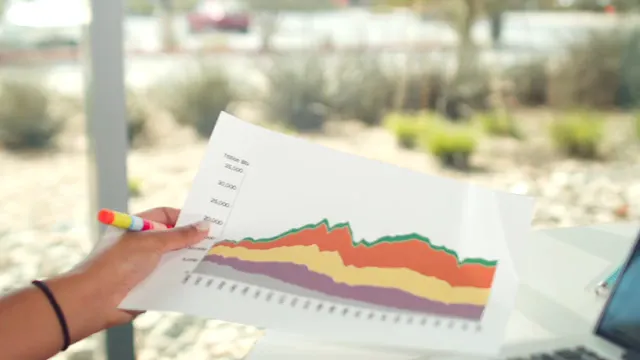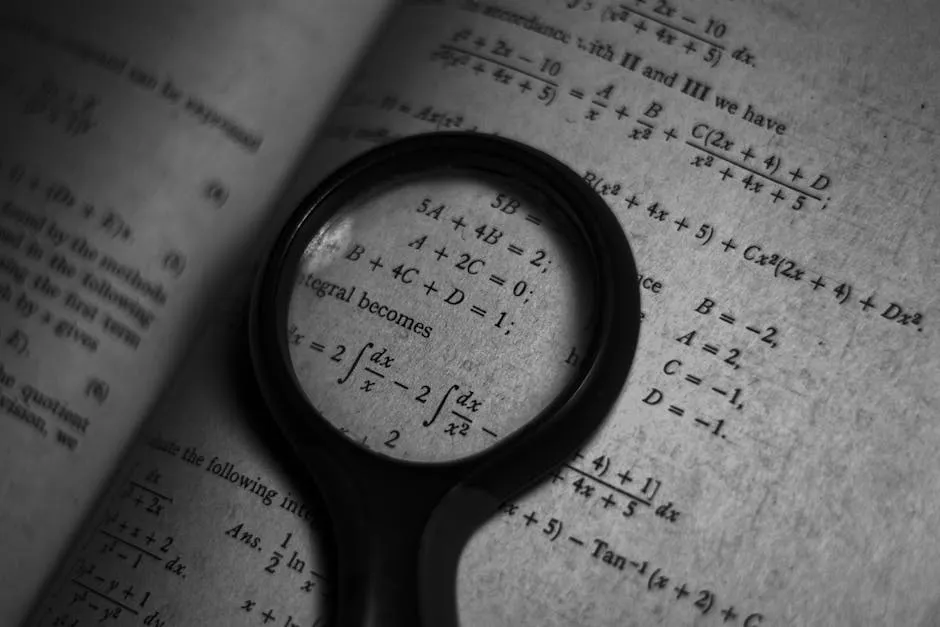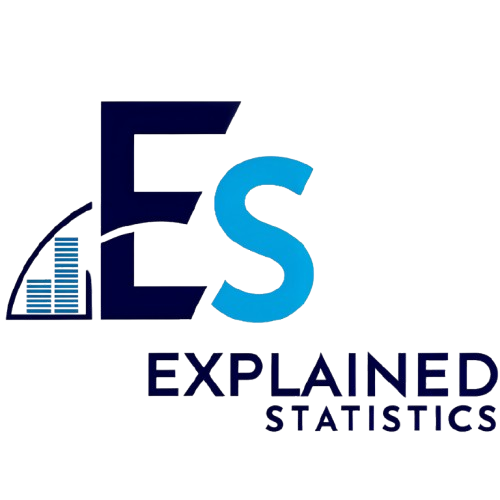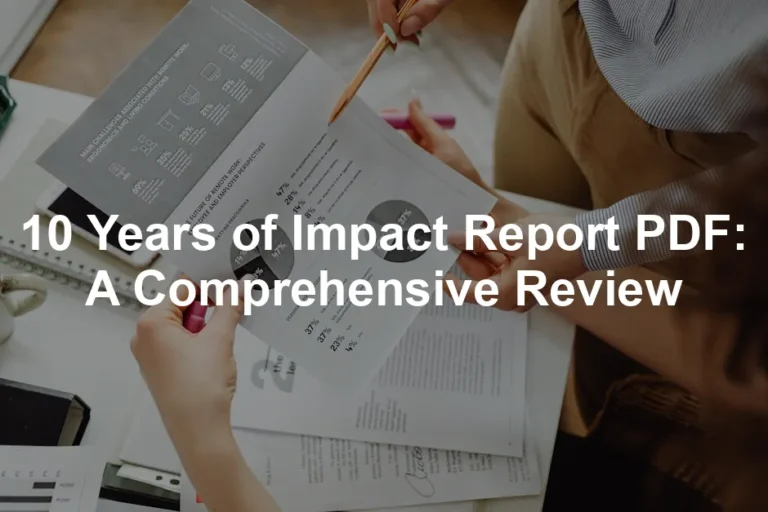Introduction
Probability and statistics are more than just math; they are the backbone of numerous fields. Whether you’re diving into mathematics, conducting scientific research, analyzing economic trends, or decoding big data, these concepts play a crucial role. Imagine making decisions based on educated guesses rather than mere intuition! That’s the power of probability and statistics.
A formula sheet is like a cheat sheet for your brain. It neatly compiles essential formulas, making it easier for students and professionals to access key concepts quickly. No more flipping through textbooks or scrolling endlessly online! This handy tool allows for quick reference, streamlining your calculations and boosting your confidence in tackling complex problems.
In this guide, we will cover a wide range of essential formulas in probability and statistics. You will find their applications, practical examples, and insights designed to enhance your understanding. Prepare to transform your approach to problem-solving and decision-making, armed with the right formulas at your fingertips. Buckle up; it’s time to make probability and statistics your new best friends!

Understanding Probability
What is Probability?
Probability is a mathematical representation of uncertainty. It quantifies how likely an event is to occur. Think of it as the bridge between statistics and real-life decision-making. But why does it matter? Understanding probability helps you evaluate risks, make informed choices, and predict outcomes in everyday situations, from playing cards to financial investments.
To grasp probability, let’s break down some key terms. First up is the event. An event is a specific outcome or a combination of outcomes from a random experiment. For instance, rolling a die and getting a four is one event, while rolling an even number is another.
Next, we have the sample space. This is the complete set of all possible outcomes. In our die example, the sample space would include {1, 2, 3, 4, 5, 6}. It’s like having your very own bingo card of possibilities!
Lastly, we have favorable outcomes. These are the outcomes that align with the event we’re interested in. If our event is rolling an even number, the favorable outcomes are {2, 4, 6}.
Probability helps us quantify uncertainty. With the right formulas and concepts, we can tackle everyday challenges and make sound decisions. So, let’s keep this momentum going and explore some crucial probability formulas!

Key Probability Formulas
Probability is all about quantifying uncertainty. To navigate this landscape, you’ll need some trusty formulas. Here are the essential ones that every statistician and data enthusiast should have in their toolkit.
Classical Probability Formula:
This formula serves as the foundation for probability. It defines the likelihood of an event occurring.
\[ P(A) = \frac{\text{Number of Favorable Outcomes}}{\text{Total Number of Possible Outcomes}} \]
Example:
Suppose you want to know the probability of rolling a three on a standard die. There’s one favorable outcome (rolling a three) and six possible outcomes (1 through 6). Thus:
\[ P(3) = \frac{1}{6} \]
Addition Rule:
When dealing with the probability of multiple events, the addition rule is your best friend. It calculates the probability of either event A or event B occurring.
\[ P(A \cup B) = P(A) + P(B) – P(A \cap B) \]
Example:
Imagine you want to find the probability of drawing either a queen or a heart from a standard deck of cards. There are 4 queens and 13 hearts. However, one of the queens is also a heart, so we must subtract that overlap:
\[ P(\text{Queen or Heart}) = P(\text{Queen}) + P(\text{Heart}) – P(\text{Queen and Heart}) \]
\[ = \frac{4}{52} + \frac{13}{52} – \frac{1}{52} = \frac{16}{52} = \frac{4}{13} \]
Conditional Probability:
This formula lets you find the probability of an event given that another event has occurred. It’s crucial for understanding dependent events.
\[ P(B|A) = \frac{P(A \cap B)}{P(A)} \]
Example:
Let’s say you have a box of fruits, including 3 apples and 2 oranges. If you randomly pick one fruit and it’s an apple, what’s the probability that the next fruit you pick is also an apple? Initially, the probability of picking an apple is:
\[ P(A) = \frac{3}{5} \]
After picking one apple, there are now 2 apples left out of 4 fruits. The conditional probability that the next fruit is also an apple becomes:
\[ P(A|A) = \frac{2}{4} = \frac{1}{2} \]
These formulas are essential for assessing probabilities in various scenarios. Use them wisely to make sense of random events, whether you’re gambling with friends or analyzing data for your latest project. Probability can be tricky, but with these tools, you’ll navigate it like a pro!

Measures of Dispersion
When analyzing data, knowing how spread out your values are can be just as important as the average. This is where measures of dispersion come into play. They give you insights into the variability of your dataset. Let’s break down three key measures: range, variance, and standard deviation.
Range
The range is the simplest measure of dispersion. It shows the difference between the highest and lowest values in your dataset.
Formula:
\[ \text{Range} = \text{Maximum Value} – \text{Minimum Value} \]
Example:
In a dataset of test scores: {80, 85, 90, 95, 100}, the range would be:
\[ \text{Range} = 100 – 80 = 20 \]
This means scores vary by 20 points.
Variance
Variance tells us how much the data points differ from the mean. A high variance indicates that data points are spread out over a wider range.
Formula:
\[ \sigma^2 = \frac{\sum (x_i – \mu)^2}{N} \]
Where \( \mu \) is the mean, \( x_i \) represents each data point, and \( N \) is the total number of data points.
Example:
For the same dataset {80, 85, 90, 95, 100}, first, calculate the mean:
\[ \mu = \frac{80 + 85 + 90 + 95 + 100}{5} = 90 \]
Now, the variance:
\[ \sigma^2 = \frac{(80-90)^2 + (85-90)^2 + (90-90)^2 + (95-90)^2 + (100-90)^2}{5} = \frac{100 + 25 + 0 + 25 + 100}{5} = 50 \]
Standard Deviation
Standard deviation is the square root of variance. It gives us a measure of dispersion in the same units as the data itself, making it easier to interpret.
Formula:
\[ \sigma = \sqrt{\sigma^2} \]
Example:
Using the variance calculated earlier:
\[ \sigma = \sqrt{50} \approx 7.07 \]
So, the standard deviation of test scores is approximately 7.07 points.
These measures of dispersion—range, variance, and standard deviation—help you understand the spread of your data. They are essential tools for any statistician or data analyst. If you want to dive deeper into these concepts, consider adding Statistics for Business and Economics to your reading list. It’s a fantastic resource for understanding the practical applications of these measures.
Now let’s transition to inferential statistics, where we draw conclusions from data samples.

Inferential Statistics
Confidence Intervals
A confidence interval provides a range of values, derived from a dataset, that is likely to contain the true population parameter. It’s important in statistical inference because it helps quantify uncertainty.
Formula for Confidence Interval of the Mean:
\[ CI = \bar{x} \pm z \left(\frac{\sigma}{\sqrt{n}}\right) \]
Where:
– \( \bar{x} \) = sample mean
– \( z \) = z-value from the standard normal distribution (based on confidence level)
– \( \sigma \) = population standard deviation
– \( n \) = sample size
Example:
Suppose you have a sample mean of 100, a standard deviation of 15, and a sample size of 30. For a 95% confidence level, the z-value is approximately 1.96. The confidence interval would be:
\[ CI = 100 \pm 1.96 \left(\frac{15}{\sqrt{30}}\right) \approx 100 \pm 5.37 \]
Thus, the interval is approximately (94.63, 105.37).
Interpreting confidence intervals means realizing the true population mean is likely to fall within this range, boosting your confidence in estimates. If you want to master these concepts, grab a copy of Introduction to Probability to strengthen your foundational knowledge.

Hypothesis Testing
Hypothesis testing is a method for making statistical decisions using experimental data. It involves two competing hypotheses: the null hypothesis (H0) and the alternative hypothesis (H1).
– Null Hypothesis (H0): Assumes no effect or no difference.
– Alternative Hypothesis (H1): Represents what you aim to prove.
General Formula for Hypothesis Testing:
The test statistic is calculated based on sample data, often using the z-test or t-test, depending on the sample size and whether the population standard deviation is known.
P-value Interpretation:
After calculating a test statistic, the p-value indicates the probability of observing the data, assuming the null hypothesis is true. A low p-value (typically < 0.05) suggests you reject the null hypothesis.
Example:
If you conduct a study and obtain a p-value of 0.03, you would reject the null hypothesis at a 5% significance level, indicating strong evidence in support of the alternative hypothesis.
In summary, confidence intervals and hypothesis testing are fundamental tools in inferential statistics. They allow us to make informed conclusions based on sample data, providing clarity in a world filled with uncertainty. If you’re looking for a comprehensive guide, check out Naked Statistics: Stripping the Dread from the Data, which makes these concepts approachable and fun!

Key Probability Distributions
Probability distributions are essential for understanding how variables behave in different scenarios. They help us describe the likelihood of various outcomes, guiding decision-making and predictions. Let’s dive into some common probability distributions, their formulas, and characteristics.
Common Probability Distributions
Bernoulli Distribution
The Bernoulli distribution is the simplest probability distribution. It represents experiments with two possible outcomes: success (1) or failure (0).
– Probability:
\[ P(X = 1) = p, \quad P(X = 0) = 1 – p \]
– Expected Value:
\[ E[X] = p \]
– Variance:
\[ Var(X) = p(1 – p) \]
This distribution is the foundation for more complex distributions, making it vital in statistics. If you want to learn more about probability theory, consider picking up The Art of Probability.

Binomial Distribution
The binomial distribution describes the number of successes in a fixed number of independent Bernoulli trials. It’s perfect for experiments where you want to know the probability of getting a certain number of successes.
– Probability:
\[ P(X = k) = \binom{n}{k} p^k (1 – p)^{n – k} \]
Here, \( n \) is the number of trials, \( k \) is the number of successes, and \( p \) is the probability of success on each trial.
– Expected Value:
\[ E[X] = np \]
– Variance:
\[ Var(X) = np(1 – p) \]
Normal Distribution
The normal distribution, also known as the Gaussian distribution, is a continuous probability distribution. It’s characterized by its bell-shaped curve, which is symmetrical around the mean.
– Probability Density Function:
\[ f(x) = \frac{1}{\sigma \sqrt{2\pi}} e^{-\frac{(x – \mu)^2}{2\sigma^2}} \]
Here, \( \mu \) is the mean, and \( \sigma \) is the standard deviation.
– Expected Value:
\[ E[X] = \mu \]
– Variance:
\[ Var(X) = \sigma^2 \]
The normal distribution is crucial in statistics because of the Central Limit Theorem, which states that the sum of a large number of independent random variables tends to be normally distributed, regardless of their original distributions.
Visual aids can help illustrate these distributions better. For instance, a graph of the normal distribution looks like a bell curve, while the binomial distribution can take on various shapes depending on the probability of success. If you’re interested in visualizing data, consider checking out Graphing Calculator (TI-84 Plus).
In summary, understanding these common distributions enhances your ability to analyze and interpret data accurately.

Continuous vs. Discrete Distributions
When discussing probability distributions, it’s essential to differentiate between continuous and discrete distributions. Each type serves a unique purpose and has different characteristics.
Discrete Probability Distributions
Discrete distributions deal with outcomes that are countable. Think of flipping a coin or rolling a die. The outcomes are distinct and finite.
Examples include:
- Bernoulli Distribution: Outcomes are success or failure.
- Binomial Distribution: Counts the number of successes in a fixed number of trials.
- Poisson Distribution: Models the number of events in a fixed interval of time or space.
Characteristics of discrete distributions:
- The probability of each outcome is defined.
- The sum of probabilities for all outcomes equals one.
Continuous Probability Distributions
In contrast, continuous distributions involve outcomes that fall within a continuous range. Imagine measuring the height of students; the results can be any value within a range.
Examples include:
- Normal Distribution: Describes many natural phenomena.
- Exponential Distribution: Often used to model time until an event occurs.
- Uniform Distribution: All outcomes in a range are equally likely.
Characteristics of continuous distributions:
- Probabilities are calculated over intervals rather than specific values.
- The probability of a single outcome is technically zero; instead, we find probabilities over ranges.
Understanding these differences is crucial for applying the correct statistical methods and interpreting data effectively. Probability distributions are not just numbers; they provide insights into the behavior of data and the underlying processes at play.

Applications of Probability and Statistics
Probability and statistics are like the superhero duo of the data world! They swoop into various fields, saving the day by making sense of chaos. Let’s take a look at how they work their magic in finance, healthcare, and social sciences.
In the finance sector, probability helps analysts gauge risks and forecast market trends. For instance, investment firms use statistical models to predict stock prices. They analyze historical data to estimate the likelihood of future movements. Think of it as trying to find the best parking spot in a crowded lot—it’s all about probability!
In healthcare, these concepts are vital for medical research and patient care. Researchers use statistics to assess the effectiveness of new drugs. They conduct clinical trials where probabilities help determine whether a treatment works better than a placebo. Imagine a doctor needing to decide which treatment to recommend—probability provides the evidence they need!
Social sciences also rely heavily on statistics. Surveys and experiments help researchers understand human behavior. For example, polling organizations use probability to predict election outcomes. They sample a fraction of voters to gauge the opinions of the entire population. It’s like trying to guess the favorite ice cream flavor of a crowd by asking just a few people!
These examples show how probability and statistics illuminate the paths of various fields, guiding decisions and enhancing our understanding of complex phenomena. If you’re interested in a practical approach, grab Practical Statistics for Data Scientists, which offers real-world examples that can help bridge the gap between theory and practice.

Example Problems and Solutions
Now, let’s roll up our sleeves and dive into some examples that demonstrate the application of key probability and statistics formulas.
Example 1: Risk Assessment in Finance
Imagine you’re assessing the risk of investing in a new company. You’ve gathered data from similar companies, showing that 30% failed in their first year. Using this information, you calculate the probability of your investment failing:
\[ P(\text{Failure}) = 0.30 \]
This simple calculation helps investors decide whether to proceed or find a safer option.
Example 2: Healthcare Effectiveness
Suppose a new drug is tested on 200 patients, with 150 showing improvement. You want to determine the probability of improvement:
\[ P(\text{Improvement}) = \frac{150}{200} = 0.75 \]
This means there’s a 75% chance that a patient will benefit from the drug, a key piece of information for doctors and patients alike.
Example 3: Social Sciences Survey
A pollster wants to predict the outcome of an election. They survey 1,000 people from a voter base of 10,000. If 600 say they prefer Candidate A, the probability of a randomly selected voter supporting Candidate A is:
\[ P(\text{Candidate A}) = \frac{600}{1000} = 0.60 \]
This data helps political strategists craft their campaigns effectively.
These examples illustrate how probability and statistics are not just abstract concepts; they’re powerful tools for making informed decisions. If you’re looking for more practice, grab Probability and Statistics for Dummies. It’s a great resource for beginners!

Conclusion
Having a comprehensive formula sheet for probability and statistics is like having a trusty map in a dense forest. It guides you through complex concepts and calculations, ensuring you don’t get lost. These formulas are not just numbers; they are practical tools used across various applications.
From assessing risks in finance to evaluating treatments in healthcare, and predicting trends in social sciences, the relevance of probability and statistics is undeniable. Mastering these formulas can pave the way for academic excellence and professional success. Whether you’re a student preparing for exams or a professional navigating data in your field, a solid grasp of these concepts is invaluable.
So, don’t hesitate! Keep your formula sheet handy, practice regularly, and watch as probability and statistics transform your understanding of the world. With these tools in your pocket, you’ll be well-equipped to tackle any data-related challenge that comes your way! For a deeper dive into statistical concepts, consider The Elements of Statistical Learning for advanced techniques.
For a deeper understanding of the length and content of statistical learning with Python, check out this article on an introduction to statistical learning with Python book length.
Please let us know what you think about our content by leaving a comment down below!
Thank you for reading till here 🙂
All images from Pexels




